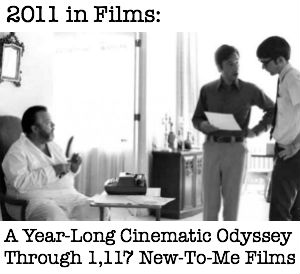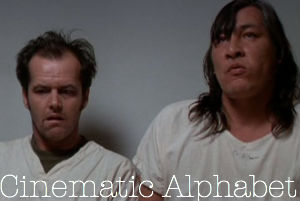Female Filmmaker Friday: Smithereens, 1982 (dir. Susan Seidelman)
I actually watched four films by Susan Seidelman last week (Desperately Seeking Susan, Making Mr. Right, Cookie and Smithereens). Aside from the film I am writing about today, I watched them in the order in which they were filmed. Thus, I have decided to spend the next four weeks of this feature discussing these films and the growth of Seidelman as a director. If I can manage to watch She-Devil before the series is over, I’ll discuss that film, too. Then I’ll have covered all of her work in the 1980s. I found a great podcast from 2009 in which Seidelman discusses the production of Smithereens, which you can listen to here. I really love what I’ve seen of Seidelman’s work and look forward to continuing her filmography. I discovered while reading about her that when she went to grad school she started out as a fashion major before switching to film, which is exactly what I did! I love little connections like that.
I read one review that said Wren, the film’s protagonist, was one of film’s most obnoxious characters and that it’s evident that Seidelman didn’t care for her character. I have to disagree with at least the latter half of that assessment. In the podcast you here Seidelman call Wren a survivor, and she is most certainly that. This is a film that depicts a time and an era with extreme accuracy. While Wren is obnoxious, yes, but she’s also one of the best depictions of what it’s like to be a teenager who yearns for more than what she was born with – both in the monetary and talent sense – yet doesn’t have the skill to really improve her situation. She’s also a portrait of the pre-Yuppie New York City. She’s a girl who came of age in the punk scene, only to discover that by the time she got there, it had moved to Los Angeles and try as she might, she can’t quite seem to get herself there to join it. The last scene in the film has got to be one of the more harrowing scenes I’ve seen a film end on, mostly because by this point all of the character’s naive hope is finally exhausted, you the viewer know where she’s headed and it’s not a pretty place. Seidelman cares about her character enough to end the film before we see her hit rock bottom, even if we know what’s coming next.
A few important notes about the film:
- It was filmed over an 18 month period, shot whenever Seidelman was able to secure financing; no one on the crew was really paid.
- Seidelman said it was a film she just had to make and that little to no thought was put into how or if it would ever be distributed. I think that’s why it feels so accurate and so passionately made. Make the film, find the audience later. I wish that was common practice throughout the industry.
- It was the first American independent film to be selected by Cannes to compete for the Palme d’Or.
- Chris Noth, a few years after earning an MFA from Yale, makes an earlier appearance towards the end of the film as a transvestite prostitute. Years later the actor and director reunited briefly on the set of Law and Order, and when Seidelman was casting for the pilot episode of Sex and the City, which she directed, she was the one that suggested Noth for the role of Mr. Big. The rest, as they say, is history.
This film is available on DVD (only $5 on Amazon!) and is well worth your time, especially if you are interested in the punk/post-punk era.
Posted on January 31, 2014, in Female Filmmaker Friday and tagged 1982, Brad Rinn, Chris Noth, Richard Hell, Smithereens, Susan Berman, Susan Seidelman. Bookmark the permalink. 10 Comments.


















Pingback: Lady Directors, Aidan Quinn and Oscar Contenders: January 2014 in Films | the diary of a film history fanatic
Pingback: Female Filmmaker Friday: Desperately Seeking Susan, 1985 (dir. Susan Seidelman) | the diary of a film history fanatic
Pingback: Female Filmmaker Friday: Cookie, 1989 (dir. Susan Seidelman) | the diary of a film history fanatic
Pingback: Female Filmmaker Friday: Starstruck, 1982 (dir. Gillian Armstrong) | the diary of a film history fanatic
Pingback: Female Filmmaker Friday: 2014 Wrap Up | the diary of a film history fanatic
Pingback: 2013 in Films: A 565 New-To-Me Films Year-End Recap | the diary of a film history fanatic
Pingback: 2014 in Films: A 365 New-To-Me Films Year-End Recap | the diary of a film history fanatic
Pingback: Female Filmmaker Friday | omen faces
Pingback: OLDFILMSFLICKER’S l FEMALE FILMMAKER FRIDAY!
Pingback: Female Filmmaker Friday: The Edge of Seventeen, 2016 (dir. Kelly Fremon Craig) | the diary of a film history fanatic